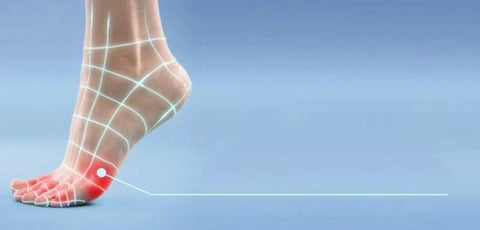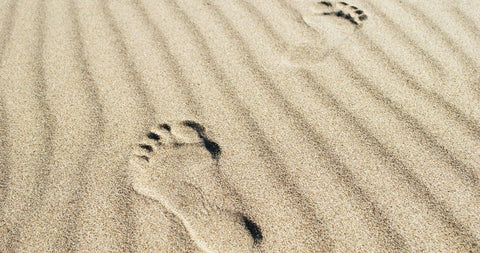
Corns and calluses
Toe woes affect many of us, and concealing unsightly corns and calluses from the world isn’t always easy. No matter if you’re a regular sufferer or if you’re going through a rough patch, there is a way to help shedding and preventing thick, dry, dead skin to bring your feet out of hibernation. Put your best foot forward with our tips below.
This is not a diagnostic tool. This healthcare professional does not endorse Scholl products and were paid by the makers of Scholl for their time producing this video
What are corns and calluses?
Corns and calluses are areas of hard, thickened skin that develop from excessive pressure or friction. Corns are small circles of thick skin often found on the top and sides of toes, or on the soles of feet. Calluses are larger areas of rough, thick, skin often yellow and found on the balls of feet or the heels.

What are the symptoms of corns and calluses?
Corns and calluses are usually symptomatic of an underlying problem such as a bone deformity, walking style, unsuitable footwear or skin type. Elderly people have less fatty tissue in their skin, making them more susceptible to corns.
The different types of Corn:
- Hard corns are most common and appear as a small area (the size of a pea).
- Soft corns are whitish and rubbery in texture and appear between toes where skin is moist from sweat or insufficient drying.
- Seed corns are tiny in size and form alone or in clusters on the heel or ball of the foot.
- Vascular corns can bleed if cut and can be very painful. Neurovascular corns have both nerves and blood vessels in them. They can be sensitive, painful to treat and can bleed if cut.
- Fibrous corns appear when corns have been present for a long time and are more firmly attached to deeper tissue. They may also be painful.
If you think you have a corn, you should seek advice from a healthcare professional who can advise you about treatment.
What are the symptom triggers?
Corns and calluses can be caused by persistent and occasional pressure from badly-fitted shoes. Calluses can also be caused by activities such as running.
What causes corns and calluses?
Corns and calluses are most common in older people or those with other foot problems, such as bunions.
Corns are often caused by wearing ill-fitting shoes that are too loose and cause the foot to slide and rub. They are also caused by shoes that create pin-pointed pressure such as high-heeled shoes and narrow shoes that pinch. They often appear on bony feet that have a lack of natural cushioning and can develop as a symptom of other conditions like bunions and hammer toe.
Calluses often surface when the skin rubs against something hard like bone, the ground or a shoe, and appear on areas of the foot that bear the most weight. Activities such as running and walking barefoot that put repeated pressure on the foot are often to blame.
Tips for avoiding and managing corns and calluses
Corns and calluses won’t improve until you find and relieve the source of pressure first. They should only be self-treated if you know the cause and have you’ve spoken to a healthcare professional about the best way to manage it.
The best way to prevent corns and calluses from recurring in the future is to wear shoes that reduce pressure and rubbing on the toes and forefeet. You can also use a pumice stone or foot file regularly to gently remove hard skin, before drying feet thoroughly after washing them and applying a moisturising cream.
All information presented on these web pages is not meant to diagnose or prescribe. In all health care matters, please contact your healthcare professional.
To explore related products, click here.
UK/SC/0319/0049f
